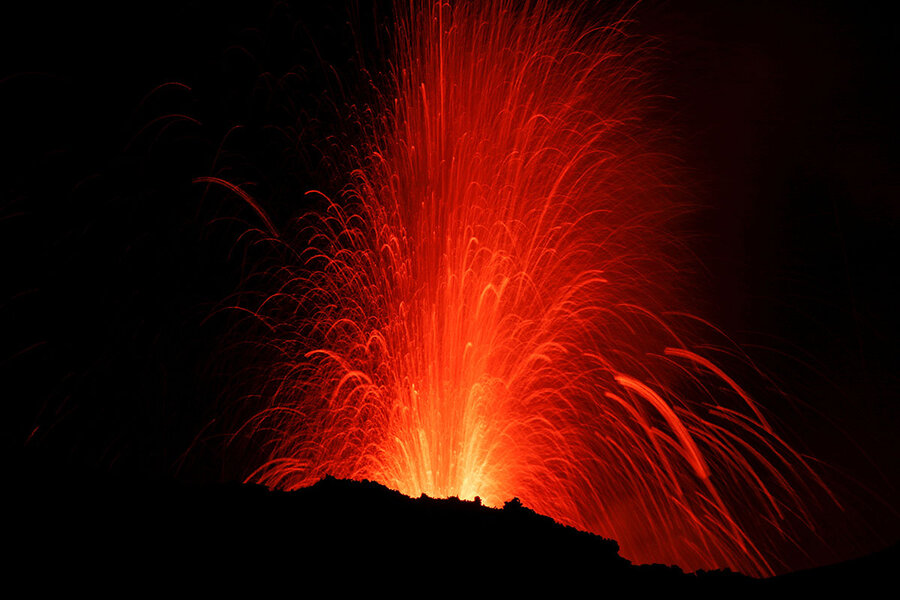Fountains of lava spray from Italy's Mount Etna
Loading...
Italy’s Mount Etna erupted Monday evening, spewing fiery lava into the eastern Sicilian sky.
The volcano’s eruptions have been known to last anywhere from days to weeks. Monday’s eruption began around 6 p.m. local time, and peaked in intensity between 11 p.m. and 1 a.m. this morning, according to Corriere della Serra, Italy’s national newspaper.
Mount Etna is the largest and one of the most active volcanos in Europe, standing around 11,000 feet tall. It can erupt from any of its many vents with little warning, making it an unpredictable feature for those living in the area. Written records of its volcanic history date as far back as 1500 B.C.
Overnight, residents and visitors in the city of Catania and the resort town Taormina were treated to views of the lava bursting into the sky.
Authorities said that towns along the mountain’s slopes are not threatened by the explosion. The Catania airport was not experiencing significant delays or disruption in service Tuesday, although some areas did see ash, which can limit visibility and ground flights.
The activity began at Etna’s New Southeast Crater last month, and gradually intensified until Monday's "strombolian" eruption, which is characterized by high-flying lava, ash, and gases that rise high enough to be carried by the wind. The classification draws its name from a different Italian island volcano, Stromboli, which sits off the east coast of Sicily.
As of Tuesday morning, the volcanic tremors' average amplitude remained high, with some small fluctuations. Officials say they do not see indicators that the eruption will intensify.
Eruptions of various degrees are common at Etna. In late 2015, the most violent eruption in two decades spouted lava nearly a mile high and sent ash some 10,000 feet into the sky.
This report contains material from the Associated Press.








